Revolutionizing Surveillance: GOTCHA Software Solution Provides Next-Gen Target Recognition
Aptima receives US Air Force contract for ‘GOTCHA,’ a software solution engineered to improve Automatic Target Recognition capabilities for the detection and classification of low-resolution and low-visibility objects
Aptima, Inc., a trailblazer in leveraging artificial intelligence and advanced analytics to enhance mission readiness, announced today that it has received a US Air Force Phase I Small Business Innovative Research (SBIR) award to develop a software solution which aims to significantly improve the detection and classification of small, difficult-to-identify objects in wide-area overhead imagery, leveraging advanced AI techniques to analyze data more effectively and efficiently.
GOTCHA: Graph-based Object-oriented Transformers using Contextual Heterogeneous Attention
Every day, satellites and aerial cameras take millions of pictures from above the Earth, but analyzing all these images manually is impossible because of their sheer volume. To help with this, Automatic Target Recognition (ATR) systems are used to find and identify both still and moving objects. However, these systems often struggle to detect small objects like vehicles, ships, and tiny structures, as these objects appear as just a few dots in the images. To improve this, the Air Force Research Laboratory (AFRL) is exploring new automated methods that combine data from different times and types of sensors, with the hope of leading to quicker and more accurate detection of objects.
To address this challenge, Aptima and partners at PatchPlus Consulting, are developing Graph-based Object-oriented Transformers using Contextual Heterogeneous Attention (GOTCHA): a technology that utilizes a graph-based transformer model that interprets image inputs as a “space-time-modality-patch” (STMP) graph and employs a transformer architecture with heterogeneous relational attention. This method focuses on the relationships and interactions among different data points in the imagery, facilitating a more nuanced and detailed understanding of the visual data. The attention mechanism specifically enables the model to focus on relevant parts of the data for better object detection.
GOTCHA aims to be more effective than previous systems used as it can better understand the relationships between different image parts over time, various types of data, and surrounding environments. This means it can more accurately detect both simple and complex small objects, as well as changes over time in the images. The improvements in detection can greatly help in various situations, such as planning responses to disasters, overseeing energy production, and exploring natural resources from afar continuously.
Aptima’s Artificial Intelligence Technologies
GOTCHA is a member of Aptima’s Artificial Intelligence Technologies (AIT) portfolio of technologies that harnesses the power of cutting-edge AI/ML methods to address the increasingly complex challenges of the future of work. By combining adaptable processes and optimizing resources in the face of uncertainty, AIT endeavors to enhance operational efficiency and human performance. Leveraging generative AI, machine learning, and predictive algorithms, AIT offers solutions in areas such as multi-modal fusion and analytics, adaptive planning, and recommendation systems, all developed with a focus on robustness and modularity for seamless integration into end-user applications.
Aptima welcomes the adoption or merging of your technology with one or more of our SBIR Topics. We are eligible for SBIR Enhancement funding, as well as TACFI and STRATFI awards, all of which are sole source.
For more information, please contact aptima_info@aptima.com.




